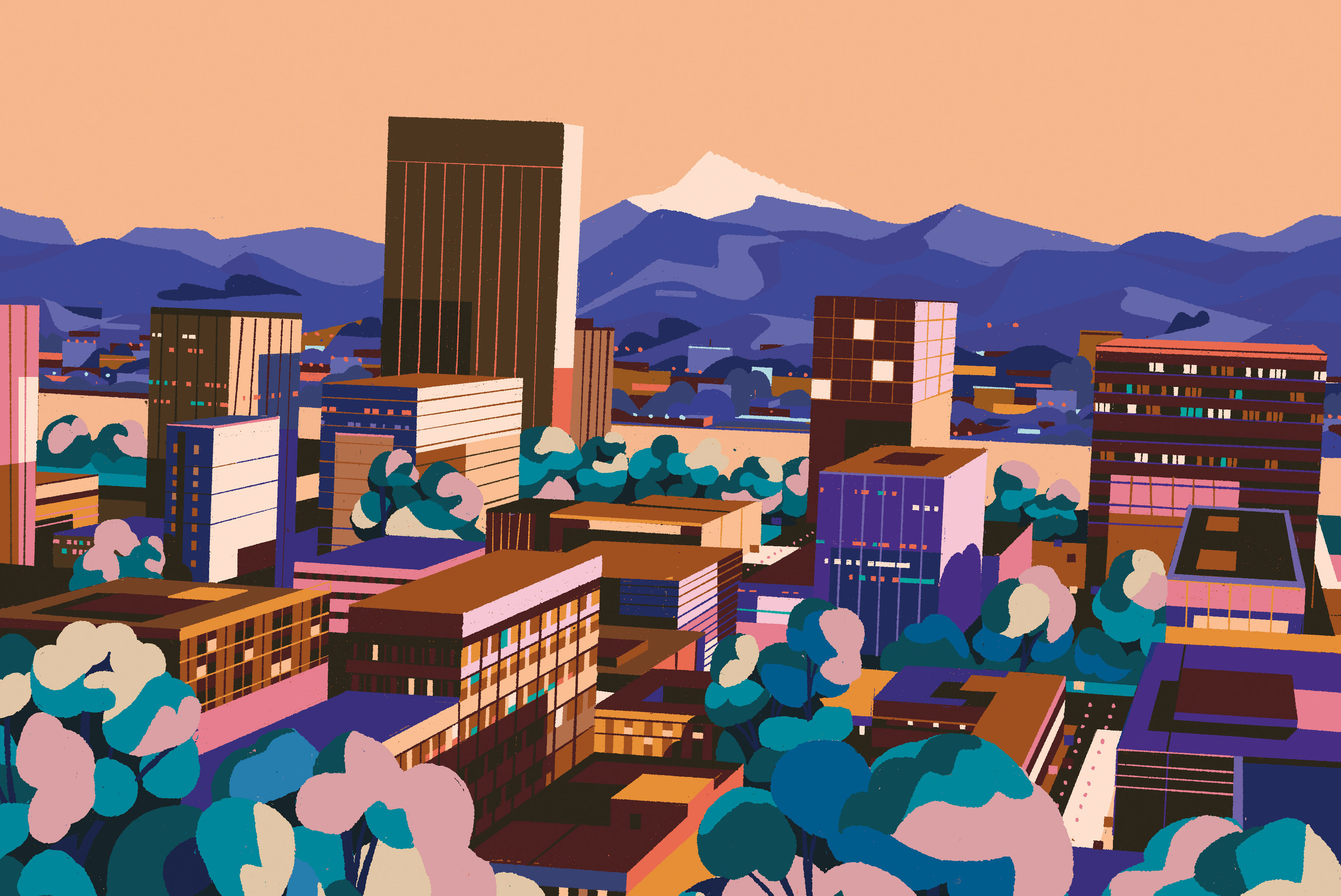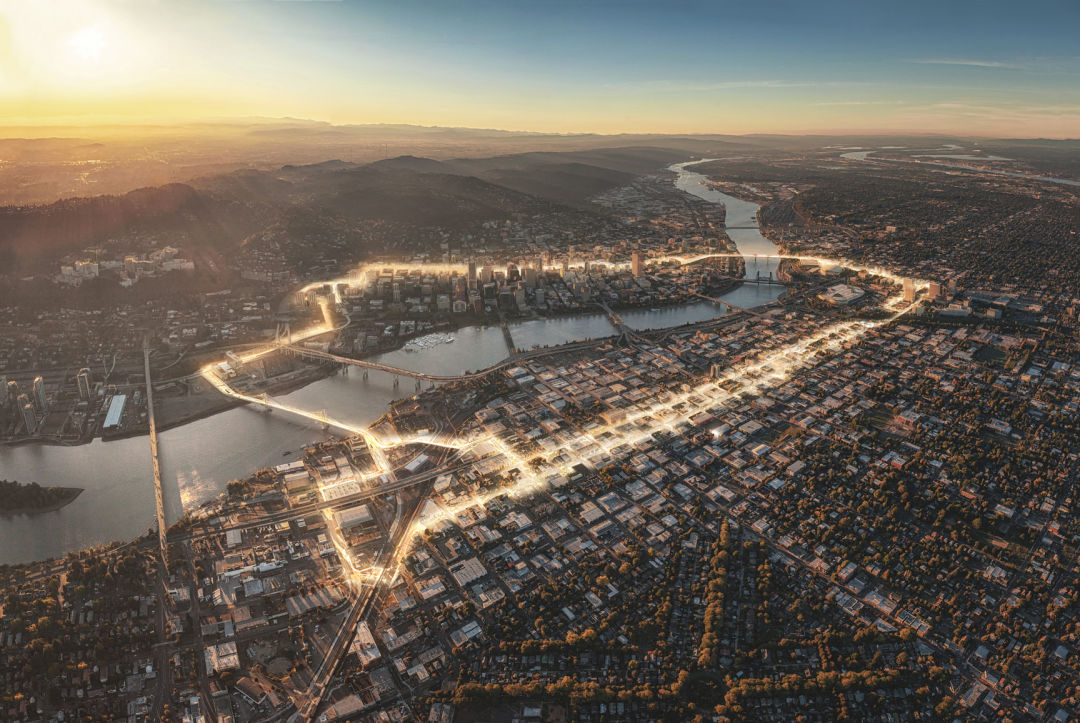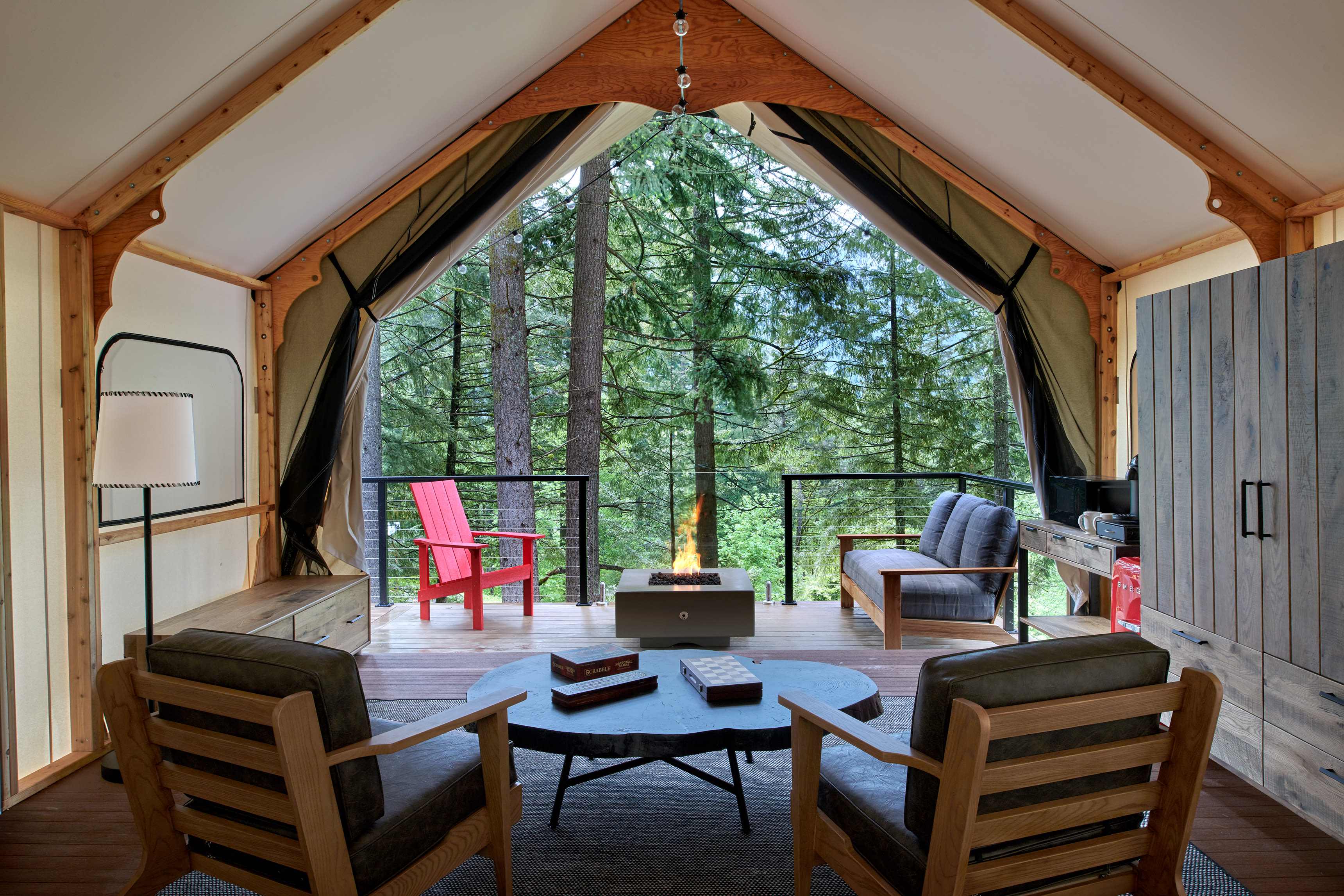
Massive Growth Is Transforming Portland. What Do We Need to Do Next?
Even if you don’t really know what “urban design” means, you might have heard that Portland’s really good at it. More than most cities, Portland has been keenly intentional about shaping the ensemble performance of streets, parks, transit, and buildings that create city life. We have good urban bones, so to speak.
Yet with scores of new people arriving every day and lots of new buildings rising for them to live and work in, will Portland’s solid foundation evolve into a stronger, bigger city? Or just devolve into a messier, uglier, unpleasant one? In my 28 years here, I’ve watched and reported on three building booms, each bigger than the last. And this boom is bugging me, as it is many Portlanders. While others fret over demolitions or fume over this big black tower or that box of apartments, I’m far more worried about the spaces in between all the new buildings—the public places where Portlanders gather and live together.
Time was when Portland built partnerships that leveraged its growth into wonderful places to be. Consider the Pearl District: together the city and developers produced three parks and a streetcar line, and property owners, on their own, pitched in verdant pedestrian paths and courtyard gardens and even set up a private service to maintain them.
Now, large swaths of the city are being transformed by outside investors, developers, and contractors beholden to bean-counting managers far, far away; they push to build every available cubic inch. The space between? A growing scribble of bike lanes, bioswales, and increasingly car-choked streets.
To illustrate what hasn’t happened—and what could—here are a few overlooked opportunities of the last decade or so, and not-be-missed prospects for the decade ahead.
MISS: The Big Pipe/West Burnside
To keep the Willamette River free of sewage, we spent $1.4 billion for the Big Pipe, tearing up blocks of the city’s west and east sides to install the supersize plumbing. Then we put it all back—exactly the same. What might have emerged had the city inspired neighboring property owners with a vision? Probably something more than West Burnside and 20th Place’s newest attraction: a Dutch Bros coffee.
OPPORTUNITY: Holladay Esplanade
From the Oregon Convention Center to Lloyd Center Cinema, four private developers are spending more than half a billion dollars to build apartments, offices, and a hotel. What could transform all that money into an urban sum greater than the parts? NE Holladay Street. Imagine a beautifully lit promenade of sculptures, gardens, and fountains with light rail breezing through—a transit-oriented “Park Blocks” for the east side.
MISS/OPPORTUNITY: Rose Quarter
Arguably Portland’s greatest urban flub of the past quarter century took place on the site of serial acts of racial injustice: the once-thriving African American community known as Lower Albina, routed by I-5, Memorial Coliseum, Legacy Emanuel Medical Center, and gentrification. A promising new coalition of community leaders led by Meyer Memorial Trust’s Rukaiyah Adams and former Portland Parks director Zari Santner—and including the Portland Trail Blazers—has emerged with a bold concept called Albina Vision Inc. They want to create a trust to serve as the district’s advocate, fiscal agent, and “curator”: to swap land, raise money, and shape a new urban district of sports, arts, housing, and workspace, as well as offer “reparations” of affordable housing for displaced families to return. Stay tuned.
OPPORTUNITY: Broadway Corridor
With our main US Post Office moving near the airport sometime soon, Portland will have 14 acres for the central city to expand. The city’s early concepts offer some big real estate deals— an expansion of the North Park Blocks lined with big towers—and show the existing post office’s 557,689 vintage industrial modern square feet erased. What about keeping it, and using it to tie together two of the strongest links in Portland’s DNA: our start-up and maker cultures, and our talent for renovating old buildings? “Upcycle” the hulking concrete post office into an affordable creative beehive.
MISS: Outer East Side MAX
In 1997, when engineering giant Bechtel proposed building the nation’s first light-rail line not reliant on federal funds, it seemed too good to be true: they would lay tracks to the airport in trade for 120 acres of adjacent land to develop a mix of offices and retail destinations. In fact, it was. Bechtel completed the now-indispensible line, but sold that land to real estate giant Trammell Crow, which built a dreary, car-clustered tax dodgers’ shopping mall. (Yes, we got Ikea, too.) And then TriMet took the express train to another missed opportunity, running the MAX Green Line down I-205. Imagine the east side that could be rising if MAX ran down east Portland’s real spine: 82nd Avenue.

A conceptual rendering of the Green Loop’s proposed path
Image: Courtesy Untitled Studio
OPPORTUNITY: The Green Loop
The proposed six-mile pedestrian/bike greenway linking center-city neighborhoods on both sides of the river promises a new connection for the central city’s expected 30,000 new households. It could be a hub from which green spokes reach outward to other neighborhoods. Lents, for instance, is already at work on a “Green Ring” that could connect to the Loop via Clinton Street’s bikeway and the Springwater Corridor. Portland works hard at bike and pedestrian safety, painting lots of pavement, pouring traffic islands, and plopping down lines of white posts. But could the Green Loop become a living shade of green, a giant allee? Like the bricks in Pioneer Courthouse Square, every tree could wear a donor’s name.
OPPORTUNITY: Rockwood Rising
As retailing moves from store shelves to drone flights, Gresham’s Rockwood District offers an early glimpse of both future emptiness and opportunity. In 2003, the neighborhood’s Fred Meyer died. The city bought the site and tore the store down, and the land has sat vacant since—next to a bustling MAX stop. Gresham native Josh Fuhrer came to the rescue. As head of the city’s redevelopment agency, he conceived a three-building redevelopment with a makers’ space, a mix of retail, and a market hall, all surrounding a gracious urban plaza. Dubbed “Rockwood Rising,” it promises a place for one of the region’s youngest, most diverse, and poorest neighborhoods to remake itself—a recipe, perhaps, for other big-box, parking-lot retail soon to stand empty around the city’s fringes.
MISS/OPPORTUNITY: Ross Island
The 400-acre Willamette River island might seem strange on a list of urban design opportunities. Not in Portland. We were a pioneer in what some call “green infrastructure”—consciously building a city that welcomes birds, fish, and pollinators. Over the decades, Ross Island Sand and Gravel excavated more than 4 million cubic yards of its cement-friendly sands. The company is supposed to put it back, but with no real deadline. What happens next could be a circular firing squad of cooler-toting boaters, beach-seeking swimmers, binocular-bearing birders, and fish advocates. Or, combined with Oaks Bottom, just across the water, Ross Island could be the centerpiece of a 460-plus-acre urban wildlife preserve.
OPPORTUNITY: “Boulevard Barbur”
TriMet’s next major transit project will be the Southwest Corridor, reaching from south downtown all the way to Tigard. Another MAX line? Rapid bus? Or, will a future of driverless cars moving in perfect unison render transit obsolete? Since no one knows with any certainty how people will move 10 years from now, why not keep the options flexible while building the one kind of corridor the metro region lacks: a grand boulevard. Think Mexico City’s Paseo de la Reforma, Brussels’s Avenue de Tervueren, Buenos Aires’s Avenida 9 de Julio, and, obviously, Paris’s Avenue des Champs-Élysées.
OPPORTUNITY: Working Kirk Plaza
Few things summed up the spirited generosity of this city more than the black guy in the white tux and Mickey Mouse hat who used to offer daily trumpet serenades and magic tricks at rush hour between the eastbound ramps of the Hawthorne Bridge. Heartbreakingly, “Working Kirk” Reeves ended his own life in 2012. Today the block between those ramps is a construction staging for the new Multnomah County Courthouse. When the building project is done, the space needs to be the plaza every important public building should have, fit for vigils, protests, performances, and music and magic tricks, while reminding us to check in on the generous eccentrics among us.




